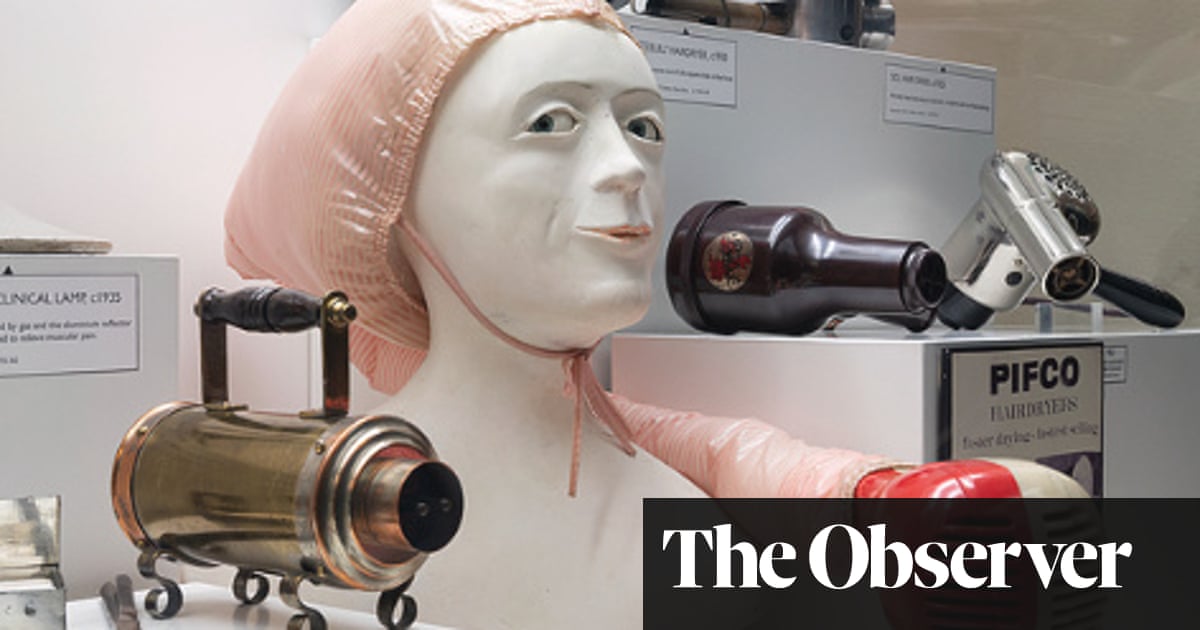Runner’s knee struck me down at the worst possible time – in early 2020, right before the pandemic. While everyone around me started lacing up trainers for their “daily hour of exercise”, I was unable to jog to the end of the road without pain flaring up in both of my knee joints for days.
I honestly believed that I would never run again. And after an MRI scan on my knee revealed I had “shallow grooves” in which the patella slipped around, a specialist told me to think about taking up a lower-impact sport like swimming instead. “You’re not built for running,” a specialist told me. “So maybe just don’t do it.”
“Oh really, he told you that?” says physio Uzo Ehiogu. Ehiogu is the founder of Inside Edge physiotherapy in Birmingham, and a specialist in musculoskeletal issues for the Chartered Society of Physiotherapy, as well as being an accredited strength and conditioning coach. As someone who recognises the benefits of running – for both physical and mental health – he is not the kind of person to tell someone to quit an exercise they enjoy unless it really is essential. And the good news is most runners can take simple steps to reduce their chances of being struck down with the dreaded runner’s knee.
But what is runner’s knee? Ehiogu admits that it is a bit of a woolly phrase, a catch-all term for any niggles at the front of the knee. “But broadly speaking, most clinicians are referring to patellofemoral joint pain. This is a condition in which the kneecap and its associated structures become overloaded.”
An overload injury is likely to develop slowly over time. Unlike, say, a sprained ankle, there is no sudden moment of trauma where something important tears. This is certainly how it was with me. In 2018, I challenged myself to get my 5km time down to under 20 minutes. That meant a steep incline in intense running. When my knees hurt a little the next day, I viewed it simply as inevitable soreness, and ploughed on with intense interval sessions.
I was making a typical mistake. “Often people will feel sore the next day, then get back on it a couple of days later and reinjure the same tissue that is trying to repair itself,” says Ehiogu. “If you keep doing this injury-repair cycle, eventually what happens is you have a knee that’s persistently annoyed. Things can become quite recalcitrant if you keep doing this. So my first advice is, if you feel pain, back off. Two weeks is probably about the time that you need to calm it down. So rather than running maybe go to the gym and do some upper body weights or cycle. If it settles down, add some sensible progressive increases and you might not need to see a physio.”
Just be careful not to start back up where you were at before. “Drop whatever you were doing before it started by about 25% to 30%. Then gradually increase training by about 10% per week,” says Ehiogu.
Reader: I didn’t do any of this. Determined to complete my quest, I ignored my pain and, by the time I finally sneaked under the 20-minute mark in the summer of 2019, I was used to hobbling around in pain for 48 hours afterwards.
People who do what I did risk permanently damaging their knees, wearing through the cartilage and turning your runner’s knee into a bone stress injury. Luckily I hadn’t gone that far. But I was in a position where simply resting for a few weeks wasn’t helping. I needed physio intervention, which I finally embarked upon 18 months after I was forced off the road, with a fantastic physiotherapist called Fred Manning. It was a slow process, tailored to my individual situation, but it was also a rewarding one. We started with gentle squats performed while supporting my back against a wall, which was about all I could stand pain wise, and moved towards gradually harder tasks until I was performing 20 single-leg squats with virtually no pain at all. What I loved about my physio wasn’t simply that he prescribed the correct treatment path, but that he was able to describe what was going on in my body in a way that made sense and therefore motivated me to put in the time to fix it.
“My athletes say the same to me,” says Ehiogu, who has worked with runners, tennis players and soldiers. “They want to know, ‘OK, why am I doing this? How does it work? How long will it take to get better?’ Being able to explain those three things makes a big difference.”
What worked for me might not necessarily be the correct path for others suffering from runner’s knee, but Ehiogu says there are some simple exercises we can all do to build lower body strength and keep some of the pressure off our knees. “Basically you want to increase muscle strength around the quadriceps, the glutes and the calf [see examples below]. Those three muscles are really important because they’re your antigravitational muscles.”
Flexibility, as well as strength, is important, and Ehiogu also suggests stretching the hip flexors, quads and calves because that will help you move into the best possible position for running – what’s known as the triple extension: “Where the hips are in extension, the knees are in extension and they’re pushing off from the toes.”
So how often should we stretch? “Obviously, the more stretching you do, the better,” he says. “But most people are time-poor so it’s probably more realistic to say stretch every time you run – and afterwards, not before. Try to do two or three sets of between 30 and 40 seconds on each one.”
Perhaps the most fascinating thing I discovered during my journey back to running was the relationship between pain and tissue damage. Although I was getting burning knee pain whenever I tried to restart training, my physio pointed out that it was unlikely I was doing untold damage to my joints in the space of 500 metres. Rather, my brain had been trained to set off a warning system whenever it felt any significant loading on the knees. Part of my rehabilitation involved teaching my central nervous system to realise that certain movements were safe again – softly hopping, for instance, or jumping off a step.
“Pain is essentially a prehistoric alarm system that says: ‘There’s damage!’” says Ehiogu. “But if I am seeing you three or four months into an injury, and the scans say that, actually, the cartilage underneath is fine, the bone is fine, then the pain is probably just because your nervous system is hypersensitive. You’ve had ongoing symptoms for such a long period that your brain is now starting to develop a memory of them.” All of which is to say, best not to let things get as bad as I did.
Of course, there are some other simple things you can do to help your knees out. Making sure your trainers are in good shape is one. Everyone runs differently, so go on “feel” rather than mileage, says Ehiogu – when they start to lose their springy bounce it is probably time to upgrade. Having your gait analysed so you buy the correct trainers will also help. As will running on softer ground, rather than pavement, and not overdoing the steep hills.
As for trying to spend your way out of knee pain? Well, I’ve been there and I’ve got the supplements, massage guns and rolls of kinesiology tape to show for it. None of these things are necessarily bad, says Ehiogu, but they should be viewed as complementary therapies alongside the hard work – they won’t magically fix your problems.
There is no getting around the fact that running has a high impact on our joints – and especially the knees. And because we all have different biomechanics, predicting who is going to get knee pain, and when it will strike, isn’t always possible. “Ultimately it’s going to come down to: what is your body willing to tolerate at this moment in time?” says Ehiogu.
Four years on from thinking I would never run again, I have achieved things that weren’t possible before thanks to the improved muscle strength supporting my knees. Whereas previously I would have had to stop around the 12km mark due to a tight IT band (another injury that can affect the knees), these days I can run half marathons without so much of a twinge. But I’m not complacent and know that running injuries are always lurking around the corner if we don’t take care of our joints. Nobody is a perfect runner, after all.
“If you look at runners around the world and compare them to what is the textbook, ideal way to run, there’s always a bit of deviation off that,” says Ehiogu. “As people start to fatigue, that deviation starts to increase. So even the best runners in the world deviate from what is the best way to run.”
And, as physios like Ehiogu show, even some of the most middling runners can overcome their knee problems and get back on the track.
Stretch this: Uzo Ehiogu’s strengthening exercises
Assuming you are not injured, these exercises should help build muscles that support the knees while running.
Calf raises
“Very simple, just move up on to your toes then slowly back down. Start off with double-leg calf raises – using both legs at the same time. Once you can do three sets of 10 repetitions with ease then you can progress this exercise to single-leg raises, which places all of your bodyweight on to each leg.”
Weighted squats
“You don’t have to have a barbell across your back to do these. A kettlebell or a weight will do. Sometimes I even tell people to put books in a bag and just hold on to it. These will target the quads and the glutes. Again, when you can do three sets of 10 repetitions then it’s time to progress by increasing the weight.”
Side-lying leg lifts
“Lie on your side with your bottom leg slightly bent for balance, then raise the other one slowly up and down. Try to stop the leg that you raise from creeping forward to ensure you target the gluteal muscles. When three sets of 10 repetitions start to feel easy use an elastic exercise band to make it harder.”






/cdn.vox-cdn.com/uploads/chorus_asset/file/25455055/Screenshot_2024_05_19_at_8.39.54_AM.png)
